As part of the 27th annual “Stamp-Out Hunger” food drive, McLennan County, Texas, letter carriers will be joining forces with the National Association of Letter Carriers on Saturday, May 11th, for the largest one-day food drive in the nation. The drive assists millions of families in the United States who are struggling to put food on their tables every day. In the Waco-McLennan County area, letter carriers will be collecting non-perishable food donations to help people served by Caritas of Waco, the Salvation Army and Shepherd’s Heart Food Pantry. This drive is one way people can assist those in their own city who need help.
This year Wal-mart is partnering with “Stamp-Out Hunger” by providing paper bags that letter carriers will leave at each mailbox prior to May 11th and which can be used for food donations.
To participate in the “Stamp-Out Hunger” Food Drive, households are encouraged to place non-perishable food items such as canned vegetables, canned meats, pasta/sauces, rice, cereal, peanut butter, dry beans, rice, macaroni & cheese, baby food, etc., in bags and leave them next to their mailbox prior to their regular mail delivery time on Saturday, May 11. Letter carriers will then collect these food donations as they deliver the mail and will provide them to Caritas, the Salvation Army and Shepherd’s Heart Food Pantry for distribution to people in need.
In the past, letter carriers in the Waco-McLennan County area have collected over 50,000 pounds of non-perishable food which makes this drive one of the largest food collection efforts in the community.
For more information, call Jerrod Perry, United States Postal Service, at 254-709-1094.
The “Stamp-Out Hunger” Food Drive takes place this Saturday, May 11th. All that you need to do is to place non-perishable food items, such as canned vegetables, canned meats, cereal, peanut butter, etc., in the Walmart paper bag left by your letter carrier and place it next to your mailbox prior to your regular mail delivery time on Saturday. Letter carriers will collect these food donations as they deliver the mail and will provide them to Caritas, the Salvation Army and Shepherd’s Heart Food Pantry for distribution to people in need. Thanks for your help!
By Cheyenne Atchison
Thirty-six percent of students at 66 surveyed colleges and universities do not have enough to eat, according to a Temple University and Wisconsin HOPE Lab study. Food insecurity among college students is a growing concern across the United States, and universities are working to find solutions to address this problem.
McLennan Community College is fighting food insecurity with Paulanne’s Pantry, a campus food pantry that provides meat, produce, canned and other nonperishable items to MCC students and faculty in need. As the associate director of MCC’s Completion Center, Letitia Monsey oversees the pantry. Before coming to Waco in 2017 to be closer to family, she worked at the University of Texas at Austin – a different campus experience than MCC.
“People go to a community college for different reasons,” Monsey said. “At UT, a bachelor’s degree was always the end goal. Here, there is a lot more diversity in the student body, which is what I was looking for.”
Many of the services provided by the Completion Center were also offered at UT, but in multiple offices rather than one. Since Monsey first came to MCC, changes have been made to allow Completion Center staff to allocate their time and resources to specific projects, such as the food pantry.
The earliest records of an MCC food pantry date back to 2007. At one point, it may have been housed in a staff member’s office. It was later reopened, and by 2015, it moved to its current location in the Completion Center. The next goal was to secure finances and use a standard budget for long-term sustainability.
As more students started using the pantry, the Completion Center staff found that issues concerning academic performance and attendance were related to food insecurity. Some students dropping out of school said they needed more time to work so they could purchase food. Conversely, some students may have spent all their money on food, forfeiting other payments for electricity or water bills, which could also lead to decreased attendance.
“We found so many students that had a need,” Monsey said. “When we had students sit in our offices, we could build enough trust to learn that they didn’t have food. It was having those conversations that allowed us to give them what they needed.”
Most of the food provided in the pantry comes from the Central Texas Food Bank. MCC established that partnership prior to 2017. MCC places an online order for the food, then twice a month, the Completion Center staff along with interns from the Tarleton State University social work program pick up the order from Acts Church. The food is then unloaded and organized in the pantry. Each load weighs between 1,200 and 1,900 pounds and averages around $250 at the discounted rate provided by the food bank. The MCC Foundation handles the food pantry fund and provides the funds to purchase food.
For daily operations, the Completion Center staff will check students in, walk them through the process, and stock the pantry shelves, along with a handful of volunteers from around campus. Volunteers must be trained in handling sensitive topics and student privacy.
When the building was due for a renovation, the pantry was expanded and received a $5,700 grant from the Texas Higher Education Foundation, which provided the funds to improve the check-in process and purchase a new refrigerator and freezer. With the ability to hold more produce and proteins, and some decorations, the pantry is now more accommodating and welcoming. It was reopened and renamed “Paulanne’s Pantry” last month in honor of Paulanne Ream Hoover, who left a portion of her estate to fund an endowment for the pantry.
As for the future of the pantry, Monsey wants to continue to serve the students and faculty of MCC, but she hopes there will eventually come a day when their help is no longer needed.
“Ideally, society will answer the problem to the point that we don’t need the pantry,” Monsey said. “Until then, we will continue to serve students and meet their needs. Right now, we’re at a good pace of what we have: we anticipate need, and we meet it. I want to sustain that.”
The Completion Center serves as a resource to provide the additional help students need to be successful. The purpose is to remove obstacles that hinder a student’s ability to progress and complete their goals. Like an intake center, the staff at the Completion Center talks with students to pinpoint areas of distress and find the right resources in a compassionate way.
“That’s where we’re different from other offices on campus,” Monsey said. “They are very distinct in what they do, we do whatever needs to be done to help the student. We take a holistic view of other things that are needed to complete the degree.”
To make a financial donation to Paulanne’s Pantry, contact the MCC Foundation at 254-299-8606 or email Kim Patterson at [email protected].

Cheyenne Atchison is a junior at Baylor University studying Marketing and Public Relations, and currently serves as an intern in the Marketing and Communications Department at McLennan Community College.
The Act Locally Waco blog publishes posts with a connection to these aspirations for Waco. If you are interested in writing for the Act Locally Waco Blog, please email [email protected] for more information.
By Christine Miller
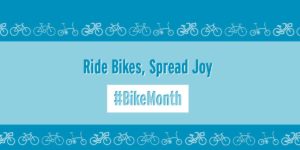
The month of May is National Bike Month. This is Waco’s second year promoting and hosting community events to highlight and celebrate the possibilities of the bicycle and the many reasons we ride. National Bike Month is a shared experience by all communities, #BikeJoy, to build a more Bicycle Friendly America for everyone.
How to Participate during Bike Month within Our Community
May 8 & 22: Bike with a Ranger – City of Waco Parks and Recreation – Park Ranger guided tour along the Riverwalk in Downtown Waco. Will highlight historical facts about Waco’s river corridor and landmarks along the route. Please meet by 6PM at the Suspension Bridge.
May 15: Ride of Silence – Waco Bicycle Club (Website: https://wacobicycleclub.com/) – A nation-wide, silent procession to honor cyclists who have been killed or injured while cycling on public roadways. Will include a reading of the Ride of Silence Poem, remembrance of local cyclists killed, and then a silent ride for about 6 to 8 miles. Meet at 6PM at City Hall fountain, located at Austin Avenue & N 3rd Street.
May 31: Critical Mass Community Bike Ride – Critical Mass Waco (Website: https://www.facebook.com/groups/47057872309/) – Critical Mass Waco leads a community bike ride the last Friday of every month. Celebrate National Bike Month with Waco’s cycling community. Meet at 6PM at City Hall fountain, located at Austin Avenue & N 3rd Street.
Waco – Becoming More Bicycle Friendly One Year at a Time
A couple years ago, the Waco Metropolitan Planning Organization (MPO) issued an online survey about citizen’s transportation and travel habits including cycling as a mode of transportation. Two of the most common reasons that created hesitation for Wacoans to choose cycling over driving a car included:
- Knowledge of safe routes to ride
- Lack of bicycle lanes or paths separated from vehicle traffic to provide a more comfortable route
In 2018 the City of Waco was awarded an honorable mention as a Bicycle Friendly Community from the League of American Bicyclists. City and MPO staff and the active cycling community have been diligently working on multiple projects to continue to improve Waco’s bicycle culture and infrastructure for citizens and visitors alike.
How to Know the Best Roads and Routes to Ride around Waco
The City of Waco, the Waco Metropolitan Planning Organization and the Waco Bicycle Club came together over the past year to develop a map of the best roads and routes for riding your bike throughout Waco as a local or as a tourist. These identified streets have a natural inclination to be more bicycle friendly than others and are as direct as possible to key destinations – parks and community centers, schools, shops and business centers. In conjunction with the Convention and Visitors Bureau the first “Cycling in Waco” map is printed and ready for you to use.
You can pick up a free, printed map at the Tourist Information Center (At the Texas Ranger Hall of Fame, 106 Texas Ranger Trail), at the Waco Parks and Recreation Department (201 W. Waco Drive) and at the Waco Convention Center (100 Washington Avenue). You may even find it at your local bicycle shop.
The Cycling in Waco map is also available online at: https://wacoheartoftexas.com/plan/visitors-guide-and-map/
More Bicycle Lanes and Shared-Use Paths are on the Horizon
This is the first year that new bicycle infrastructure will begin to be signed and striped on our Waco streets in many years. In conjunction with the City’s Pavement Maintenance Program and previously awarded federally funded grant projects new bicycle infrastructure will soon be on:
- Lake Shore Drive from Wooded Acres Drive to N 19th Street
- MacArthur Drive from McFerrin Avenue to Alexander Avenue
- S 26th Street from Clay Avenue to Bagby Avenue
- Elm Avenue from Martin Luther King Jr Boulevard to Forrest Street
- 11th/12th Streets from Downtown Waco to Garden Drive
- Washington Avenue from University Parks Drive to N 18th Street
- Londonderry Drive from New Sanger Road to Old McGregor Road
- Herring Avenue from N 4th Street to N 15th A Street
- Colcord Avenue from N 5th Street to N 18th Street
City staff are applying this year to federally funded grant programs with emphasis on multi-modal transportation to include a shared-use path on Mars Drive near Midway Middle and High Schools and a multi-purpose trail along the former Missouri-Kansas-Texas Railroad right of way in East Waco. The City is also applying to Safe Routes to School federal grants which if awarded will include infrastructure improvements for school-aged bicyclists and pedestrians in future years to come.
Bicycle and Scooter Share Pilot Program
A year-long planning and design process is finally wrapping up and Waco will soon have a bicycle and scooter share pilot program. Expect to see electric-assist bicycles and scooters in the Greater Downtown in June this year. Ride a scooter to your favorite place for a bite to eat in downtown. Take a sunset bike ride along the Riverwalk before you head home for the night. Be a tourist for a day, leave your car behind and enjoy the various local favorites and hot-spots via a bike or scooter. The City looks forward to seeing all of you taking part in this new way to get around town.
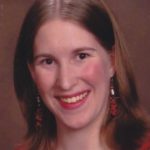
Christine Miller is a traffic engineer in training for the City of Waco Public Works Department. She has been with the City of Waco since 2015 and has been directly involved in improving the infrastructure for the bicycle and pedestrian community. Though she is not an avid cyclist yet, she does own a bicycle and takes it out on fair weather weekends to the Cottonbelt Trail and the Riverwalk and to trail systems in Round Rock and Austin. Maybe you’ll see her at one of the scheduled Bike Month rides. She’ll happily chat about genealogy, the Women’s World Cup coming up this June, and the changes that are occurring in Waco.
April 29 through May 5,2019 marks the 100th anniversary of Children’s Book Week. The 100th Anniversary theme — Read Now ∙ Read Forever – looks to the past, present, and most important, the future of children’s books. Grab a kid, grab a book and read together this week! And every week! And every day! — ALW
By Jessica Emmett
Everyone has a favorite children’s book. Whether you love Dr. Seuss, Goodnight Moon or Brown Bear, Brown Bear, you probably get the warm fuzzies when you think about some book from your childhood. Children’s books are the gateway to becoming lifelong learners and lifelong readers, and the standards are high. For a book to end up in your school, your library or your hands, lots of people have to think it’s pretty great (and it helps if it gives someone the warm fuzzies, too).
This week we have been celebrating Children’s Book Week with fun activities and ideas to help get kids in Waco excited about reading!
Children’s Book Week
In 1919, librarians, editors, booksellers and Boy Scouts decided to start a literacy initiative to promote reading among young people in the United States. In 1944, the Children’s Book Council assumed responsibility for running Children’s Book Week, an event that connects libraries, bookstores, schools and homes—anywhere where young readers are reading.
Today, Children’s Book Week is the longest running national literacy initiative in the country. Over 1,300 libraries, bookstores and schools host events to celebrate the week. This year is the 100th anniversary of the first Children’s Book Week, so we can celebrate all year long. The theme this year is Read Now • Read Forever.
Why Read?
Getting kids to read helps expand their vocabularies. Learning new words helps young brains develop just like exercise helps their bodies. It’s like mental cross-training! Better readers are better writers, so reading all those books can lead to strong job skills along with a life-long love of James and the Giant Peach.
Reading is a great way to experience other cultures, too. Kids can learn about places they’d like to visit and about the unique history and people who live there. What a great way to start conversations and inspire a new generation of travelers!
Learning about history, science and how the world works can inspire innovation and creativity. When kids read books, they walk away with brand new ideas and ways to solve problems.
One of the best side-effects of reading is developing a great imagination! When kids learn what might be—instead of being limited to the things they can see—they dream bigger. Think about Harold and his purple crayon… Imagination is magic!
How Can You Help?
Inspiring young people to become readers is everyone’s responsibility. Reading to kids is the obvious way to share books with them, but it’s not the only one. Be a great role model by reading for work or for fun. Kids absorb and mimic your behavior, so reading inspires them in a positive way.
Bring kids to the library regularly to encourage them to value reading, sharing and community resources. While you’re there, take a trip to the children’s department to see if we have your favorite book. Take a little time to pass it on to a young person in your life. The books of your childhood help tell your story in the best words possible.
If you don’t have a favorite childhood book, or you’d like to discover something new, just ask us. Our librarians have amazing suggestions for the best books. They know the classics and what’s new, so you might discover a new favorite.
Be sure to sign up for Library News emails to get book recommendations, too!
What’s Happening?

The Children’s Book Week event is a nationwide party for our favorite children’s books, and part of it takes place at your Waco Library! On Wednesday we had a carnival at West Library and participants made up stories to share with their friends. We had a book walk game and gave out fabulous prizes (books!) On Friday, we’re having a Rainbow Fish party at South Waco Library! Hear the classic story, make a snack and something crafty, too.
Of course, every day, we have books for you to read and enjoy. Everyone age 5 and over can get their own library card. You can even register for a card online and swing by the library to pick it up!
So, cross the bridge to Terabithia and join us where the wild things are April 29 through May 3 and we promise, you won’t have a terrible, horrible, no good very bad day.
The Rainbow Fish party is May 3 at 4 PM at the South Waco Library (2737 S. 18th St.)
For more information about online card registration, Library News emails and Library programs (including Summer Reading Club) be sure to visit wacolibrary.org.

Jessica Emmett is the Community Services Supervisor for the Waco-McLennan County Library. She loves “preaching the gospel of the library” and has been doing marketing, promotion and outreach for the Waco Library for almost three years. Before joining the Library team, Jessica worked for a decade in public education, as an aide, teacher and librarian. She loves how her job lets her teach people of all ages about something she loves—the library!
Jessica enjoys lots of hobbies, including cooking, disc golf and running. She loves to read (of course) and usually has three or four books open at a time. When she’s not doing outreach, Jessica spends a lot of time in a very lonely office, so be sure to say “hi” if you see the Library table at your next Waco event!
The Act Locally Waco blog publishes posts with a connection to these aspirations for Waco. If you are interested in writing for the Act Locally Waco Blog, please email [email protected] for more information.
April 29 through May 5,2019 marks the 100th anniversary of Children’s Book Week. The 100th Anniversary theme — Read Now ∙ Read Forever – looks to the past, present, and most important, the future of children’s books. Grab a kid, grab a book and read together this week! And every week! And every day! — ALW
By Sarah Miller
I grew up going to the library a few times a year. My parents could not afford to keep up with my constant reading, so trips to the library supplemented my ever-growing wish list of books. One summer as a child I stayed with my grandparents for a week. When I arrived, they said they had purchased three books for me (all Babysitters Club, I’m sure) and they gently reminded me that those books had to last an ENTIRE week. I read all three in the first day. I spent the rest of the week stressed about having nothing else to read. Enter the library…a fourth-grade girl’s dream place. This was back before the internet (gasp!), so I loved looking through books from various genres and learning about far-away places.
Fast forward to 2019. I’m now parenting a seven-year old who is obsessed with learning. My kiddo wants to know ALL about dinosaurs one week and then the next, wants to learn about the Andes Mountains. He reads books about natural disasters and how to be a spy and how plate tectonics work. His library adventures began at six months old. I started taking him to the Waco Public Library for a Baby Time. He LOVED listening to the stories and hearing Miss Vivian’s awesome voices. He transitioned to Toddler Time and then by pre-school he got his own library card.
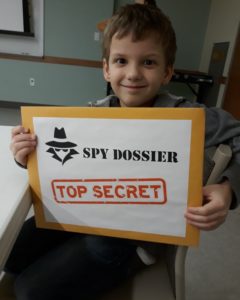
Caleb and I have been to every single library in Waco and love each children’s area. Most of our time is at the Central Library and I can honestly say, I’m SO grateful to have this resource in my area. Not only do we check out books and DVDs, but they have games and arts and crafts available for use in the children’s area at any time. We often go and spend a few hours at the library. They have special events each month as well. They had a Library Spy Program and Caleb LOVED it. Often they have family night events where kids come in their pajamas for stories or have space where you can bring blankets and build forts in the library. Best of all? Y’all this is FREE! I’m not paying for any of these fun activities. They have kids’ yoga, Minecraft events, Lego Labs, and so much more…
While I was in graduate school, one of the librarians would often help me find resources for papers. He taught me about new ways to search and how to cite things correctly. He also showed me how to reserve books online so all I have to do is show up to the library and head over to the shelf and get the stack of books. This is a game changer for this working momma! I want my son to have new books to read each week but don’t want to spend an hour or so finding all of these books. So, I just do it online and pick up the stack the kind librarians have put on the shelf for me.
One last shout out for my library: a few weeks ago, my son was having an issue at school. We went to the library (as we do often after school) and I mentioned to the librarian what was happening. Within 10 minutes, she had found books I had never heard of and sent us home with resources that really helped both of us. I am incredibly grateful for the Waco librarians for helping me with parenting, graduate school, resources for my patients and their families, and more.
Wacoans: take advantage of this FREE resource! Have an hour before you head to an appointment? Why not sit in a quiet space at the library and read? Get to know your librarians too…they are an amazing resource for our community.
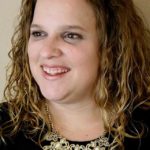
Sarah Miller is a hospice chaplain in Waco and when she isn’t at the library, she can be found teaching goat yoga, kayaking, and traveling with her delightful first grader.
The Act Locally Waco blog publishes posts with a connection to these aspirations for Waco. If you are interested in writing for the Act Locally Waco Blog, please email [email protected] for more information.
By Lindsey Breunig

Summer time is approaching, Waco is starting to heat up, and so is the grilling season! From local parks or in your own backyard, grilling out can be a tradition that brings together family and friends. Not only is grilling out a social experience but grilled meals are tasty, healthy, and economically friendly. Weather permitting, grilling gets family and friends outside, and gives you an opportunity to encourage physical activity. Rather than sitting around and waiting, use the grilling time as an opportunity to throw the softball, kick a soccer ball, or bump the volleyball. Additionally, lawn games are cheap, easy to transport, and suitable for all ages. Participating and moving around while grilling will help increase one’s strength, endurance, balance, and flexibility – all while a delicious meal is being made!

Not only does grilling out create quality time with friends and family but it is a low-fat cooking option for a variety of foods and colors on your plate. Most of our favorite foods can be grilled. This includes beef, chicken, fish, pork, and even your favorite fruits and vegetables. Grilled fruits can be delicious additions to a main dish or even desserts. Be creative and let the children pick their favorites to try out. When grilling fruits it is important to keep an eye on the grill as fruits cook quickly. In fact, you might find that even your pickiest eaters will enjoy their vegetables after the foods are grilled! To prevent sticking, it’s helpful to brush fruit lightly with oil. Interested in grilling some veggies? Here are some quick instructions:
Ingredients:
- 2 tablespoons of vegetable oil
- 2 garlic cloves (finely chopped)
- Any mix of your favorite veggies (for example: corn, eggplant, zucchini, onions, or peppers)
Directions:
1. Mix the oil and garlic in a large bowl before adding and tossing the vegetables. (For easy clean up you can use a gallon size bag)
2. Place the vegetables on a broiler pan or grill. Cook for 10 minutes, turning twice until the vegetables are tender.
3. Place the vegetables on platter and enjoy!
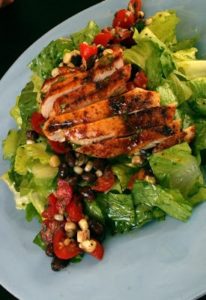
There are also economic benefits to grilling. Grilling outside will help lower high summer electric bills by not raising the inside house temperature. Grilled food makes great leftovers for the next day. Leftover meats are great in lettuce-based salads and leftover vegetables go great with scrambled eggs. Try making a tasty grilled chicken salad by adding corn, black beans, tomatoes, cilantro, lettuce, and salsa with your left-over grilled chicken. Dice the chicken up and mix with the other ingredients!
Grilling can be dangerous without taking the proper safety steps. There are an ample number of opportunities to teach family and friends about food safety while out grilling. For example: using separate plates for raw and cooked meats to avoid cross-contamination. Use tongs to turn solid pieces of meat to avoid cross-contamination and keep the juices of the meat inside. Tongs will keep your hands safe but also remember to keep your hands clean and away from the hot grill or flame. Heat the grill for 10-15 minutes before adding food so foods will be seared instead of steamed or baked. Finally, assure your food is safe to eat by cooking your food to the minimum internal temperature throughout. Use a food thermometer (not your eyes) to make sure meats are fully cooked. Beef, pork, veal, and lamb (steaks, roasts, and chops) should be cooked to a minimum internal temperature of 145 degrees, while ground beef, pork, and veal should be cooked to a minimum temperature of 155 degrees. All poultry should be cooked to a minimum of 165 degrees.
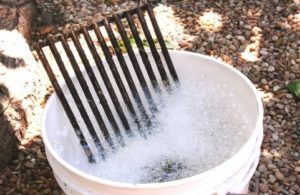
Whether you use a gas, charcoal, or electric grill, it is important to follow the operating directions carefully and keep your grill in a safe place to avoid accidents. To help get the most out of your grilling experience remember to clean your grill before cooking. To clean your grill, remove the grates and wash in hot, soapy water. Scrub off any food particles or drippings with a brush or scrubbing pad. Rinse with clean water and air dry. Remember to remove and clean, or replace, the drip pan. Clean the outside of the grill with hot, soapy water and rinse clean. Follow the manufacturer’s instructions for cleaning the burners and interior of the grill.
Create safe habits that friends, family, and even children know, and you will be one step closer to a great day grilling out. Below is a graphic from the Centers for Disease Control and Prevention that you can share with friends and family! Happy Grilling Season!

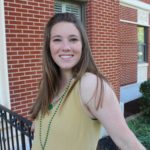
Lindsey Breunig is a graduate of Baylor University and currently works as the Better Living for Texans Educator for the Texas A&M AgriLife Extension Service. She is originally from Grapevine, TX and now calls Waco home. Here in Waco she loves to venture out to Cameron Park, visit the local Farmers Market, and try out the awesome eateries in Waco. If you see her and hear a loud bark, that’s her pup Lucy just saying hello.
The Act Locally Waco blog publishes posts with a connection to these aspirations for Waco. If you are interested in writing for the Act Locally Waco Blog, please email [email protected] for more information.
By Dr. Lucia Harcum
May 4th is an election day in Mclennan County. It is easy to believe your vote does not matter or will not count. This is incorrect. In May’s 2017 election, less than 4% of registered voters cast a vote and only 1 out of 80 McLennan county residents voted. These statistics make it easy to see that with only a very little effort, the McLennan county voters can be statistically significant in election results.
This is not an election for president, your senator, congressperson, mayor or even dog catcher. So some may be tempted to feel this is a “who cares” election. Even voters that know all about national politics have a challenging time connecting any of them to our daily lives. The fact is that everyone you know NEEDS to vote in May. This action ensures that in the future your votes are sought after, you and your family concerns are addressed, and that these issues must be considered and addressed by your elected officials wishing to remain in office and those seeking offices.
Too often entire neighborhoods do not vote because it appears to them that those running do not seem to care about what is important to their family. Yet this is a two-way street. How can an elected official seeking your vote know your wishes if they do not even know if you will vote? Why would they care about what is important to you if you have not shown them that they can count on your vote and you will vote, even in a low-controversy election? Use this upcoming election as a megaphone for the vote. The vote this election is expected to be so low that even small groups of neighborhoods that show up in mass could significantly sway all elections by an easy margin. Make your vote count; said here, is why.
Traditionally this phase in the voting cycle has an expected low voter turnout because the issues are not extremely politically charged with emotion. If you vote, all the Parties are watching and will glean as much information as possible about the voting population demographics. That information will then be used sway your future vote. Frankly this has always happened in the past. The difference today is that information is dissected via the internet and social media. It may be difficult to know or confirm the true facts. Research the information. Make an informed decision. Vote intelligently with a focus toward your desired outcome in world-wide interests, nation-wide, state, county and local government concerns or interests in the future.
This upcoming voter turnout will serve as a gauge for voter interest by the political cogs. It will notify the parties, all of them (Republican, Democrat, Libertarian, and Green), about the apathy and/or passion of all districts. It will be the base for candidate platforms and with these demographics they will statistically calculate the precinct’s potential and future viability of candidates and proposal successes.
Good news for voting. The lines will be short, and parking will be available. Voting in this election shows our elected officials (and their political planners) you’re your vote has real value. Your voice through your vote needs to be sought out, heard, and addressed by the political planners. This includes concerns about you, your family, your community, and your country in all aspects: healthcare, education, economy, jobs, etc. Also, and this is very important, the people that get out and vote will be a factor of the future election campaign because you will vote again in the future.
Your vote can easily have a significant impact on the opinion of potential new or incumbent officials and changes in laws. If you do not vote, it is assumed that you will remain one of the voiceless who simply (but stupidly) gave their voice to someone else. The projected turnout for November’s election amplifies your voice today and in the future. Use your vote as a megaphone to represent your family, your neighborhood, and McLennan County. If you are registered, vote by May 4. If you are not registered, do so NOW and your vote WILL count in the future!
Before you vote, check out the non-partisan voter guides for the elections to the Bellmead City Council and the Hewitt City Council at www.vote411.org.

Dr. Lucia Harcum is a free-lance research writer and active member of the League of Women Voters of Waco, Junior League of Waco, Central Texas Coalition for Literacy, Central Texas Hispanic Chamber of Commerce, and is Treasurer of a local nonprofit. This article originally appeared in her weekly column, Para La Familia, published by TIEMPO, a Central Texas Spanish/English Newspaper. It has been adapted for the May 2019 publication in the Act Locally Waco blog.
The Act Locally Waco blog publishes posts with a connection to these aspirations for Waco. If you are interested in writing for the Act Locally Waco Blog, please email [email protected] for more information.
Do you walk, ride, roll, bike or drive in McLennan County? The Waco region is growing! That raises questions about how we will get to places we want to go now and in the future.
The Waco Metropolitan Planning Organization (MPO) is now receiving public comment on a draft Waco Metropolitan Area Active Transportation Plan (ATP). The ATP provides recommendations for expanding and improving the pedestrian and bicycling transportation network in the Waco Metropolitan Area through the year 2045.
For a Draft of the Active Transportation Plan, Click Here: Draft Plan.
The Waco Metropolitan Transportation Plan (MTP) outlines the broader mobility needs for the Waco Metropolitan Area through 2045. The MTP serves as the blueprint from which mobility projects to address those needs are developed.
The MPO will be conducting 2 public informational meetings to give interested persons the opportunity to view the draft ATP plan and to solicit comments regarding recommended strategies for improving pedestrian and biking conditions. The MPO also invites interested persons to help in the development of the MTP by identifying mobility challenges and sharing ideas to address them. These meetings are scheduled as follows:
- Wednesday, May 1, 2019, 12 Noon. South Waco Community Center, 2815 Speight Avenue, Waco, TX 76711 Doors open 11:30 AM. ATP presentation at 12 Noon. MTP presentation at 1 PM.
- Wednesday, May 1, 2019, 5:30 p.m. South Waco Community Center, 2815 Speight Avenue, Waco, TX 76711 Doors open 5:00 PM. ATP presentation at 5:30 PM. MTP presentation at 6:30 PM.
The MPO is accepting comments regarding the Active Transportation Plan through July 5, 2019, and the Metropolitan Transportation Plan (MTP) through 5:00 PM on May 31, 2019. Comments may be sent by e-mail to [email protected], or by mail to Waco MPO, P.O. Box 2570, Waco, TX, 76702-2570. Verbal comments will also be accepted at (254) 750-5650 between the hours of 8:00 a.m. and 5:00 p.m. Monday through Friday.
Comments should be directed to Christopher Evilia and may be submitted via the following methods:
- Email: [email protected]
- Phone: (254) 750-5650
- Mail: Waco Metropolitan Planning Organization P.O. Box 2570 Waco, Texas 76702-2570
Press release – Bankston’s in Waco is one of the thousands of comic book shops around the world celebrating the largest event in the comic book industry on Saturday, May 4th: Free Comic Book Day (FCBD)! Each year, thousands of participating stores give away over five million comic books to millions of fans to introduce them to the wonders of comics.
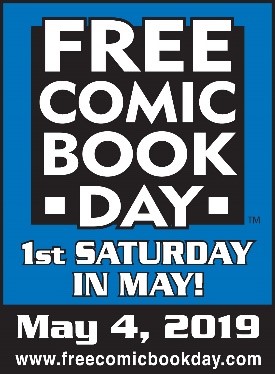
“Free Comic Book Day is a great event for the whole community. Bringing everyone together, finding books for everyone to enjoy, and seeing people of all ages—children, teens, and adults—sharing our passion for comics is incredible,” said Jeremy Root, manager of Bankston’s. “Even if you’ve never picked up a comic book, we want to welcome everyone to Bankston’s on May 4th, because there are so many amazing comics this year and we can’t wait to share them.”
This is the 18th year Bankston’s will celebrate FCBD, offering the community a fun, family-oriented event where everyone can find a comic they’ll enjoy. Bouncy Houses, DeeJay Versatile, Sidewalk Sale, FCBD Patches and this year several Music Bands.
“With awesome titles like Avengers, Tokyo Pop Disney, Riverdale, TMNT, Pokemon and others, we’re sure there’s a comic book for everyone,” Root continued. “Comics are a fun and enduring form of entertainment for readers of all ages to dive into as imagination comes to life. Whether it be popular comics, film, television shows, or video games, there’s something for everyone to enjoy.”
Regular updates, information about comic books, and a list of participating publishers and their free comics are all online at www.freecomicbookday.com.
Free Comic Book Day kicks off at 10:00am and runs until 6:00pm at Bankston’s Comics and Sportscards at 1321 S. Valley Mills Dr in Waco. Call 254-755-0070, or follow us on Facebook for more information.
ABOUT FREE COMIC BOOK DAY—Celebrating its 18th year, Free Comic Book Day is the comic book specialty market’s annual event where participating comic book shops across North America and around the world give away comic books absolutely free to anyone who comes into their comic shops. The event is held the first Saturday in May and is the perfect opportunity to introduce friends and family to the many worlds of wonder available at local comic book shops. From super-heroes to slice-of-life to action/adventure and beyond, Free Comic Book Day has a comic book for everyone!


